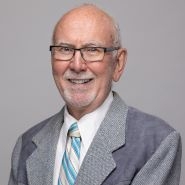Why Are 35 USC 146 Actions Becoming So Popular?
- Oct 1998
- Article
- Intellectual Property Today, Vol. 5, September 1998, pages 6-10
Associated People
Associated Practices
Why Are 35 USC 146 Actions Becoming So Popular?[1]
by Charles L. Gholz [2]
An interferent dissatisfied with the decision of the Board of Patent Appeals and Interferences can obtain court review of the board’s decision in two very different ways: it can file a 35 USC 141 appeal to the Federal Circuit or it can file a civil action against the prevailing party in an appropriate district court. An appeal to the Federal Circuit is, of course, on the record made before the board. However, while 35 USC 146 states that "the record in the Patent and Trademark Office shall be admitted on motion of either party...," it also gives the parties the rights (1) to "further cross-examination of the witnesses [who appeared in the administrative proceeding]..." and (2) "to take further testimony [both from witness who appeared in the administrative proceeding and from witnesses who did not appear in the administrative proceeding]...." Those rights are what has lead to 35 USC 146 proceedings’ frequently being called "de novo" or "quasi-de novo" proceedings, although neither term appears in the statute.
According to Calvert and Sofocleous, Interference Statistics for Fiscal Years 1992 to 1994, 77 JPTOS 417 (1995):
Court review [of final decisions by the Board of Patent Appeals and Interferences in patent interferences] was sought in 41 (28.1%) of the 146 interferences (139 two-party, seven multi-party) in which the Board rendered a decision after final hearing [during fiscal years 1992 to 1994]. 26 appeals were filed in the Court of Appeals for the Federal Circuit[,] and 15 civil actions under 35 USC 146 were filed in the U.S. district courts, a considerable increase over the three civil actions reported in our previous article [which reported the statistics for the three previous fiscal years].[3]
Anecdotal evidence[4] suggests that the upward trend in 35 USC 146 actions as a percentage of total court reviews of final decisions by the board in patent interferences has continued or even increased since 1994.[5]
This phenomenon raises an obvious question: why are 35 USC 146 actions becoming so popular?[6]
This article will examine some of the tradeoffs between 35 USC 141 appeals to the Federal Circuit and 35 USC 146 actions in district courts as alternative avenues of court review of final decisions in interferences[7] and will give the reader my answer to the question posed in the title. In brief, I believe that there are two reasons why 35 USC 146 actions have recently become more popular than they were in the past. First, a 1989 opinion by the Commissioner changed the PTO’s policy on issuance of patents to the prevailing party in applicant-applicant interferences in a fashion that gives those of their opponents who have an economic incentive to delay the ultimate decision an avenue to do just that through the 35 USC 146 process. Second, the widely noticed rising value of patents makes the greater cost of 35 USC 146 actions less important than it used to be.
"De NOVO" REVIEW
According to Dunner, Gholz, Jakes, and Hutchinson, Court of Appeals for the Federal Circuit: Practice and Procedure § 10.03, "Comparative Analysis of Federal Circuit and District Court Review," the fact that, in contrast to the Federal Circuit in 35 USC 141 appeals, the district courts in 35 USC 146 actions are entitled to receive new evidence beyond that received in the PTO "was no doubt primarily responsible for the original division of court review...."[8] However, just how significant that "entitlement" is is open to considerable question.
For practical purposes, the question of how significant the entitlement to submit new evidence in 35 USC 146 actions is has to be broken down into two sub-questions. In Conservolite, Inc. v. Widmayer, 21 F.3d 1098, 30 USPQ2d 1626 (Fed. Cir. 1994) (majority opinion delivered by Circuit Judge Lourie for himself and Chief Circuit Judge Archer; dissent delivered by Circuit Judge Newman), the majority said that "The issues presented by the parties [in the 35 USC 146 action] were not raised during the interference; therefore, they were not properly before the district court."[9] Conservolite makes it very clear (1) that new issues can be raised in 35 USC 146 actions only in "compelling circumstances"[10] and (2) that the only circumstance that the Federal Circuit is likely to find compelling enough to justify the raising of a new issue in a 35 USC 146 action is the discovery during the 35 USC 146 that a fraud was perpetrated on the board during the administrative proceeding.[11] Hence, for practical purposes, one is unlikely to be able to get new evidence in during a 35 USC 146 action except where the new evidence relates to an old issue. That, however, leads to the first sub-question to be discussed here: what does the Federal Circuit mean in this context by the phrase "new issue"? The second sub-question to be discussed here is: if an issue is an "old issue," are there any limits on the new evidence that the parties can introduce concerning the "old issue"?
WHAT IS A "NEW ISSUE"?
The court’s recent opinion in Estee Lauder Inc. v. L’Oreal, SA, 129 F.3d 588, 44 USPQ2d 1610 (Fed. Cir. 1997) (opinion delivered by Circuit Judge Mayer for a panel that also consisted of Circuit Judges Rader and Schall), deals with this question. While it gives us no helpful analysis, what the court did (as contrasted to what it said) may give us some guidance for the future.[12] Specifically, what the count did suggests that the court will interpret the term "issue" very broadly, giving the parties the opportunity to submit additional evidence in more situations than I would have expected prior to Estee Lauder.
In Estee Lauder, the court held that, because the party Smith et al. had attempted (unsuccessfully) to prove an actual reduction to practice before the board, in a subsequent 35 USC 146 action it was entitled to introduce evidence of a different actual reduction to practice. That is, it held that the issue of whether the party Smith et al. had actually reduced its invention to practice was an "old issue" despite the fact that the party Smith et al. relied on a different alleged actual reduction to practice in the 35 USC 146 action than it had relied on in the administrative proceeding.
Before the board, the party Smith et al. relied upon evidence concerning tests employing a first set of samples. It alleged that testing of the first set of samples by an independent testing laboratory actually reduced the invention to practice. However, the board held that the party Smith et al. had failed to prove that the first set of samples contained the active ingredient recited in the count. Accordingly, the board entered judgment for the party Hocquaux et al.
In the 35 USC 146 action, the party Smith et al. relied on evidence concerning tests employing two sets of samples. The first set of samples was the same one that it had relied on before the board, but the second set was entirely different.
Surprisingly, the district court permitted the party Smith et al. to rely on the evidence concerning the second set of samples despite the fact that it had not relied on that evidence before the board. Moreover, although the district court agreed with the board that the party Smith et al. had failed to prove that the first set of samples contained the active ingredient recited in the count, it reversed the board’s judgment based on the evidence concerning the second set of samples.
On appeal to the Federal Circuit, the court reversed again. In doing so, it provided indirect enlightenment as to what it considers to be a "new issue" within the meaning of Conservolite. However, all that is said expressly was that:
The primary question before us is whether Estee Lauder [i.e., the party Smith et al.] established by a preponderance of the evidence that it successfully reduced its invention to practice before the April 13, 1987, critical date. If it did, then it is entitled to priority. *** Whether Estee Lauder was the first to conceive the invention and was reasonably diligent in reducing it to practice is not before us because Estee Lauder failed to raise this issue before the board or on appeal. The only issue before the board was priority of reduction to practice. Therefore, although the district court did not abuse its discretion in allowing Estee Lauder to introduce evidence of the... tests [employing the second set of samples] insofar as this evidence was relevant to its reduction to practice, Case, 730 F.2d at 752, 221 USPQ at 202, the district court could not examine, absent compelling circumstances, whether this evidence [i.e., the evidence of the tests employing the second set of samples] established any other issue not raised before the board, such as priority based on prior conception coupled with diligent reduction to practice. See Conservolite, Inc. v. Widmayer, 21 F.3d 1098, 1102, 30 USPQ2d 1626, 1629 (Fed. Cir. 1994).[13]
Obviously, the question here is the meaning of the word "issues" in the passage from Conservolite quoted at the outset. In Estee Lauder, there were at least four possible interpretations of that term. In descending order of breadth, they were: (1) had the party Smith et al. proved priority — i.e., had the party Smith et al. proved that it made the invention before the party Hocquaux et al.’s effective filing date; (2) had the party Smith et al. proved that it had actually reduced to practice the invention defined by the count before the party Hocquaux et al.’s effective filing date; (3) had the party Smith et al. proved that its tests employing the first set of samples constituted an actual reduction to practice of the invention defined by the count before the party Hocquaux et al.’s effective filing date; and (4) had the party Smith et al. proved that the first set of samples contained the active ingredient recited in the count.
According to the Federal Circuit, whether the party Smith et al. had proved an actual reduction to practice before the party Hocquaux et al.’s effective filing date was an issue that the party Smith et al. had raised before the board, but whether it had proved priority on another basis was not an issue that it had raised before the board. However, whether the party Smith et al. had proved priority based on the tests employing the second set of samples was also not an issue that the party Smith et al. had raised before the board. Hence, if the court had interpreted "the issue" presented to the board as being whether the party Smith et al. had proved that its tests employing the first set of samples constituted an actual reduction to practice of the invention defined by the count before the party Hocquaux et al.’s effective filing date, the party Smith et al. would not have been entitled to present to the district court evidence concerning its tests employing the second set of samples. By defining "the issue" as broadly as it did, the court gave the party Smith et al. the opportunity to prevail based on entirely different evidence than the evidence that it had submitted to the board — despite the fact that it is the administrative patent judges (not the judges of the United States District Court for the District of Columbia) who are supposed to be experts in evaluating evidence of inventive acts.
What are we to make of the court’s holding in Estee Lauder? Obviously, the court provided no meaningful analytic guidance. Its holding can be paraphrased as "The term ‘issue’ can’t be interpreted too broadly, and it can’t be interpreted too narrowly; it must be interpreted just right." However, Estee Lauder does suggest that a losing interferent has the opportunity to classify surprising things as "old issues." That biases losing interferents towards 35 USC 146 actions — if the constraints discussed in the next section are not too confining.
IF AN ISSUE IS AN OLD ISSUE, ARE THERE ANY CONSTRAINTS ON WHAT EVIDENCE A PARTY TO A 35 USC 146 ACTION MAY INTRODUCE CONCERNING IT?
Although 35 USC 146 actions are often called "de novo" proceedings, the court in Conard-Pyle Co. v. Thuron Industries, Inc., 201 USPQ 733 (N.D. Tex. 1978), pointed out that the trademark analogs of 35 USC 146 actions (i.e., 15 USC 1071(b)(1) actions) are better termed "quasi-de-novo" proceedings and explained that:
The phrase quasi-de-novo is used advisedly because[,] even though new evidence may be introduced[,] the decision of the TTAB may only be reversed if, after viewing the evidence, the district court is satisfied to a thorough conviction that the TTAB was in error.[14]
Thus, there apparently are constraints on the evidence that a party to a 35 USC 146 action can introduce even as to an "old issue." According to Dunner et al., op cit. supra, there is (or, at least, there was) a "general rule applicable to de novo proceedings (under 35 USC § 145, 35 USC § 146, and 15 USC § 1071(b)) that new evidence may not be introduced in court if it was withheld from the Patent and Trademark Office due to fraud, bad faith or gross negligence."[15] However, the opinions cited in support of that "general rule" are pre-Federal Circuit.
The Federal Circuit first addressed the question of whether there are constraints on the introduction of new evidence as to old issues in 35 USC 146 actions in Case v. CPC International, Inc., 730 F.2d 745, 221 USPQ 196 (Fed. Cir. 1984) (opinion delivered by Circuit Judge Nies for a panel that also consisted of Circuit Judge Kashiwa and Senior District Judge Kellam), cert. denied, 469 U.S. 872, 224 USPQ 736 (1984). In that opinion, it seemed to lower the barriers to the introduction of new evidence as to old issues considerably:
since an action under 35 U.S.C. § 146 has the hybrid nature of an appeal and a trial de novo, the statute authorizes the district court to accept all proffered testimony on issues raised by the parties during the proceedings below or by the board’s decision.[16]
However, in Case the additional evidence submitted at trial of the 35 USC 146 action was submitted by the senior party, which had submitted no evidence during the administrative proceedings, but which had won anyway. Obviously, as stated in Dunner et al., op cit. supra, "Where a party in the position of plaintiff below takes no testimony and loses to defendant by default, very different considerations are implicated."[17] Moreover, and more importantly, Case stands for the proposition that a district court does not commit reversible error by letting additional evidence in. It does not stand for the proposition that a district court would commit reversible error by keeping additional evidence out,[18] and it is obviously in the district court’s enlightened self-interest to keep out as much additional testimony as possible.
However, the reader should note that the district courts in both Case and Estee Lauder let in additional evidence which, under the test enunciated in the pre-Federal Circuit opinions cited in Dunner et al., they could have kept out. It seems that some district judges really are more interested in achieving a just result than in moving their dockets!
In summary, while it seems likely that the Federal Circuit will have the occasion to tell us whether the "general rule" referred to in Dunner et al. is still in existence, the possibility of submitting new evidence as to old issues strongly biases losing interferents towards 35 USC 146 actions.
DELAYING ISSUANCE OF AN OPPONENT’S PATENT
In addition to the substantive reasons for filing 35 USC 146 actions, there are tactical reasons. In my judgment, the single most important factor motivating the increase in 35 USC 146 actions is that, in Martin v. Clevenger, 11 USPQ2d 1399 (Comm’r 1989), the Commissioner changed the PTO’s previously long-standing practice so that now a patent will ordinarily not issue to the winner of an applicant-applicant interference until after court review is completed.[19] Court review in the Federal Circuit is quick; court review in a district court can drag on for years. According to the triennial articles by Judges Calvert and Sofocleous, the average time between the board’s decision and the termination of court proceedings has varied as follows over the fifteen years that they have been keeping statistics[20]:
| 35 USC 141
Appeals |
35 USC 146
Proceedings |
|||
| 1992-94 | 11.6 months | 18.7 months | ||
| 1989-91 | 10.3 months | 14.8 months | ||
| 1986-88 | 11.4 months | 20.5 months | ||
| 1983-85 | 10.5 months | 59.3 months | ||
| 1980-82 | 13.1 months | 23.6 months |
Moreover, these figures are average figures. Because of the great incentive to delay provided by Martin v. Clevenger in applicant-applicant interferences, I strongly suspect that the disparity would be even more striking in a similar table showing the results only in such cases.[21] In that situation, the losing party has an enormous incentive to choose a 35 USC 146 action rather than a 35 USC 141 appeal.
RELATIVE EXPERTISE
The judges of the Federal Circuit spend most of their time on patent cases, and most of their law clerks have technical backgrounds and are fledgling patent attorneys.
By contrast, even the judges of the district courts for the District of Delaware and the Eastern District of Virginia (which handle more patent cases than any of the other districts) see relatively few patent cases. That has lead to the perception that losing interferents with weak cases may favor 35 USC 146 actions over 35 USC 141 appeals.
Of course, all roads lead eventually to Rome. That is, appeals from district court decisions in 35 USC 146 actions are to the Federal Circuit. However, as previously noted, 35 USC 146 actions can drag on for years, and during the pendency of those actions parties that prevailed before the board (particularly applicants that prevailed before the board and that are desperate to get their patents) may be induced to settle on favorable terms. Moreover, the Federal Circuit will always presume that the decision by the next lower tribunal is correct — which means that, if the district court reverses the board, it will be the district court’s decision that is presumed to be correct, not the board’s decision.
Although I hesitate to say it, it seems likely that consideration of the relative expertise of the Federal Circuit and the district courts also biases losing interferents towards 35 USC 146 actions — at least in some cases.
RELATIVE EXPENSE
Cost is a consideration that, in most cases, biases both winning and losing interferents against 35 USC 146 actions.[22] There is no gainsaying the fact that 35 USC 146 actions tend to be more expensive than 35 USC 141 appeals — in fact, much more expensive. As stated in Dunner et al., op cit. supra:
the cost of the de novo trial [in a 35 USC 146 action] is likely to be significantly greater than the cost of an immediate appeal [to the Federal Circuit], and... the cost of an appeal [from the district court to the Federal Circuit] (which is likely to be greater than the cost of an appeal directly from the PTO) times the probability of the appeal must be included in any estimation of the projected cost of going the district court route.[23]
However, many interferences are big ticket litigations by anybody’s standards,[24] and no doubt the cases in which court review is sought involve, on average, more valuable inventions that those in which court review is not sought. The plain truth of the matter is that, in many cases, the additional expense of 35 USC 146 actions (in comparison to 35 USC 141 appeals) pales in comparison to the other factors considered herein. Hence, while this consideration no doubt biases both losing and winning interferents against 35 USC 146 actions, in many cases it does not do so to an extent sufficient to overcome the bias towards 35 USC 146 actions provided by the other factors considered here.
CONCLUSION
My best guess is that there are two reasons why 35 USC 146 actions are becoming so popular. First (and most importantly), the PTO’s change of policy announced in Martin v. Clevenger makes delay much more valuable than it used to be in applicant-applicant interferences. Second, the general increase in the value of patents due to the advent of the Federal Circuit has made the greater cost of 35 USC 146 actions (relative to 35 USC 141 appeals) less daunting than it used to be. The other factors discussed herein, although all tending to bias losing interferents towards 35 USC 146 actions, have not changed significantly in recent years, and hence they cannot account for the recent increase in the popularity of 35 USC 146 actions.
Published in Intellectual Property Today, Vol. 5, September 1998, pages 6-10.
Endnotes
1. Copyright 1998 Charles L. Gholz.
2. Mr. Gholz is a partner in and head of the interference section of Oblon, Spivak, McClelland, Maier & Neustadt, P.C. in Arlington, Virginia. His e-mail address is cgholz@oblon.com. I acknowledge with thanks the contributions of Eugene Gholz, who is a research fellow at the Olin Institute for Strategic Studies, Harvard University, and Paul Morgan, who is the in-house interference guru at Xerox.
3. 77 JPTOS at 420.
4. That is, my personal experience plus conversations with other interference specialists, particularly at meetings of the Interference Committee of the AIPLA.
5. CAPJ Stoner has informed me that another of the triennial statistical summaries by Judges Calvert and Sofocleous is in the works but unready for publication or even informal distribution.
6. One possible answer is that they are not, that the difference between the figures for 1992-94 and 1989-91 are within the expected historical range of random fluctuations. After all, Judges Calvert and Sofocleous have been publishing their triennial statistics since 1983, and the historical percentages (of 35 USC 146 civil actions as a percentage of total court reviews) have fluctuated as follows:
1980-82 41.2% 1983-85 15.2% 1986-88 32.4% 1989-91 11.5% 1992-94 36.6%
7. Trademark practitioners seeking court review of final decisions by the Trademark Trial and Appeal Board have a similar choice between appeals to the Federal Circuit under 15 USC 1071(a)(1) and civil actions in district courts under 15 USC 1071(b)(1). However, I have no experience in those matters. Beyond hazarding the guess that tactical and strategic considerations are entirely different in trademark cases, I will not discuss the trademark analogy.
8. Dunner et al., op. cit. supra at 10-64.
9. 21 F.3d at 1100, 30 USPQ2d at 1628.
10. At the risk of stating the obvious, I point out that, if one is not entitled to consideration of a given issue in a 35 USC 146 action because it is a "new issue," one is not entitled to submit evidence concerning that issue.
11. Conservolite is discussed in Gholz, "A Critique of Recent Opinions of the Federal Circuit in Patent Interferences," 77 JPTOS 427 (1995) at pages 447-49.
12. The fact that the court states the facts of the case and its conclusion without connecting the two with meaningful analysis regrettably requires me to rehearse the facts in more detail than would otherwise be desirable. My apologies to the reader.
13. 129 F.3d at 592, 44 USPQ2d at 1612-13. I have discussed the case with counsel for both parties, and they agree that the party Smith et al. made no attempt to rely on evidence of conception of subject matter within the scope of the count coupled with evidence of an actual reduction to practice after the party Hocquaux et al.’s effective filing date by evidence of continuous diligence. Hence, the second part of the quote is pure dictum.
14. 201 USPQ at 736. Although Conard-Pyle was a 15 USC 1071(b)(1) trademark action rather than a 35 USC 146 patent action, according to Dunner et al., op cit. supra, "What the court in Conard-Pyle said of decisions of the TTAB is, of course, also true of decisions of the BPAI." Dunner et al., op cit. supra at 10-64 n.4.
15. Dunner et al., op cit. supra at 10-66; footnote omitted.
16. 730 F.2d at 752, 221 USPQ at 202.
17. Dunner et al., op cit. supra at 10-70 n.17.1.
18. In fact, in Case the Federal Circuit specifically said that:
Whether under some circumstances a district court may properly restrict the admission of testimony on an issue raised before the board is not before us. The court here accepted the testimony[,] and we find no error in its doing so. [730 F.2d at 752, 221 USPQ at 202.]
19. See Dunner et al., op. cit. supra § 7.06, "Withholding of Issuance of Patent or Certificate of Registration Pending Federal Circuit Decision." The PTO’s pre-Martin practice of ordinarily not issuing a patent to an applicant winner of an applicant-patentee interference until after court review is completed has continued unchanged.
20. In their first three triennial articles, Judges Calvert and Sofocleous reported these figures in days rather than in months. I have translated their figures into months by dividing by 30 (a) for the sake of consistency and (b) because that level of accuracy is sufficient for my purposes.
21. According to the triennial articles by Judges Calvert and Sofocleous, applicant-applicant interferences terminated as a percentage of all two-party interferences terminated has varied as follows:
| Total
Two-Party Interferences |
Applicant-Applicant
Two-Party Interferences |
Percentages |
|||
| 1992-94 | 673 | 162 | 24% | ||
| 1989-91 | 550 | 190 | 35% | ||
| 1986-88 | 509 | 148 | 29% | ||
| 1983-85 | 615 | 212 | 34% | ||
| 1980-82 | 775 | 265 | 34% |
While these figures omit multi-party interferences where all parties were applicants,
Recent Publications
Federal Circuit Holds Prosecution History Disclaimer Applicable to Design Patents
by Sana Tahir, Law Clerk and Andrew Ollis, Partner










 Counseling & Strategic Advice
Counseling & Strategic Advice IP Transactions
IP Transactions Litigation
Litigation PTAB Proceedings
PTAB Proceedings Technology Transfer
Technology Transfer Trademark & Designs
Trademark & Designs U.S. Patent Procurement (Application Drafting & Prosecution)
U.S. Patent Procurement (Application Drafting & Prosecution)








